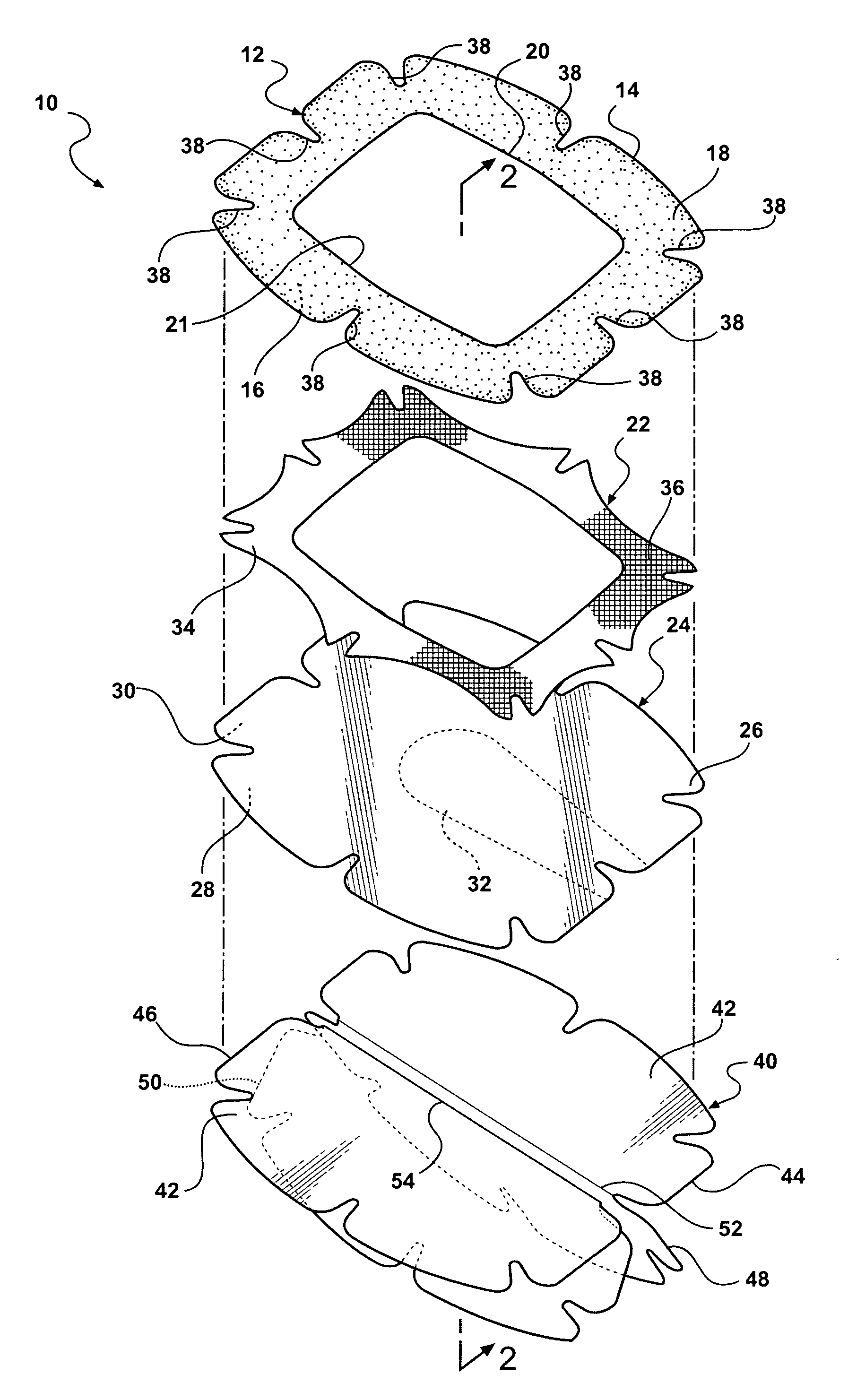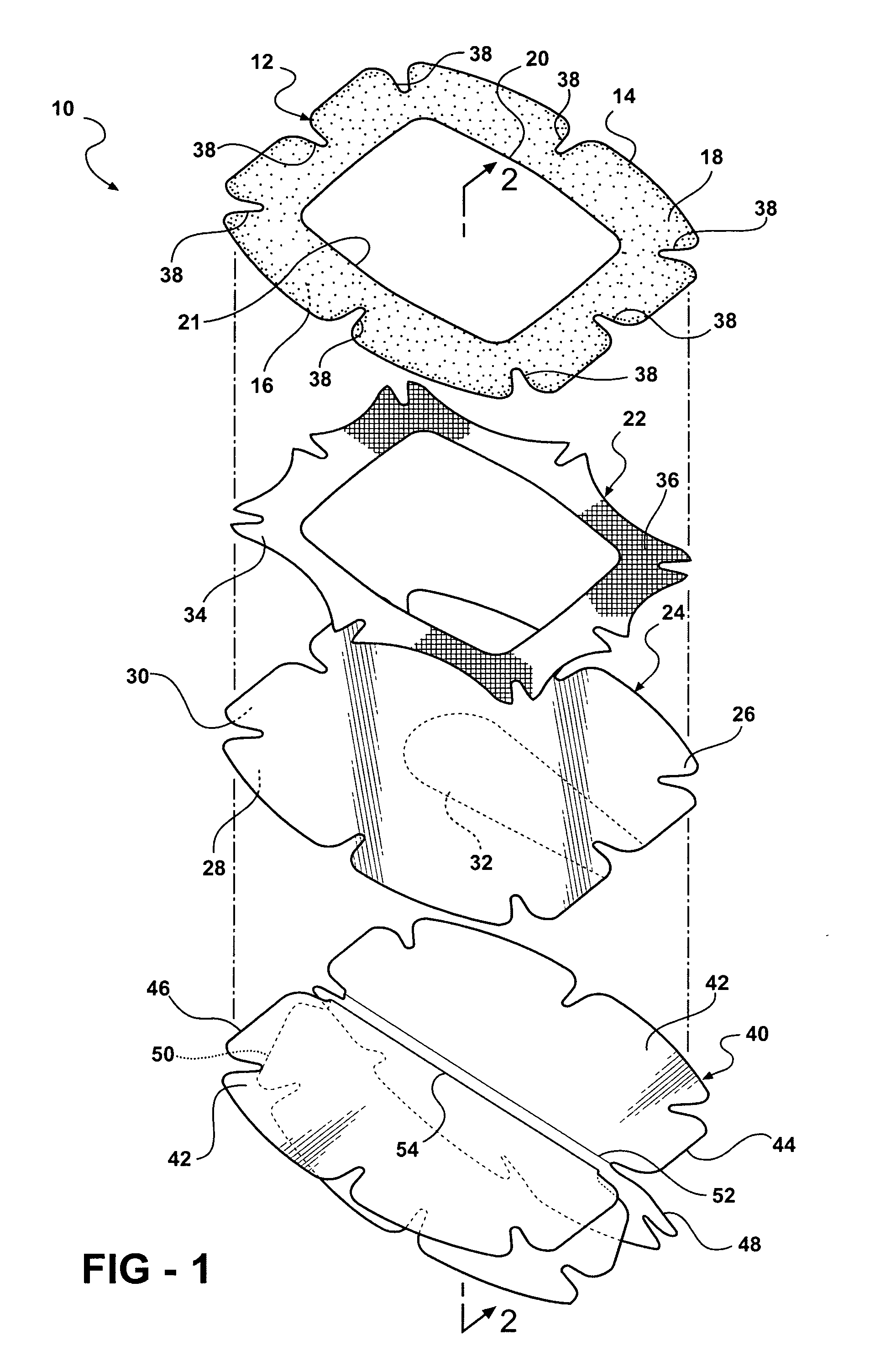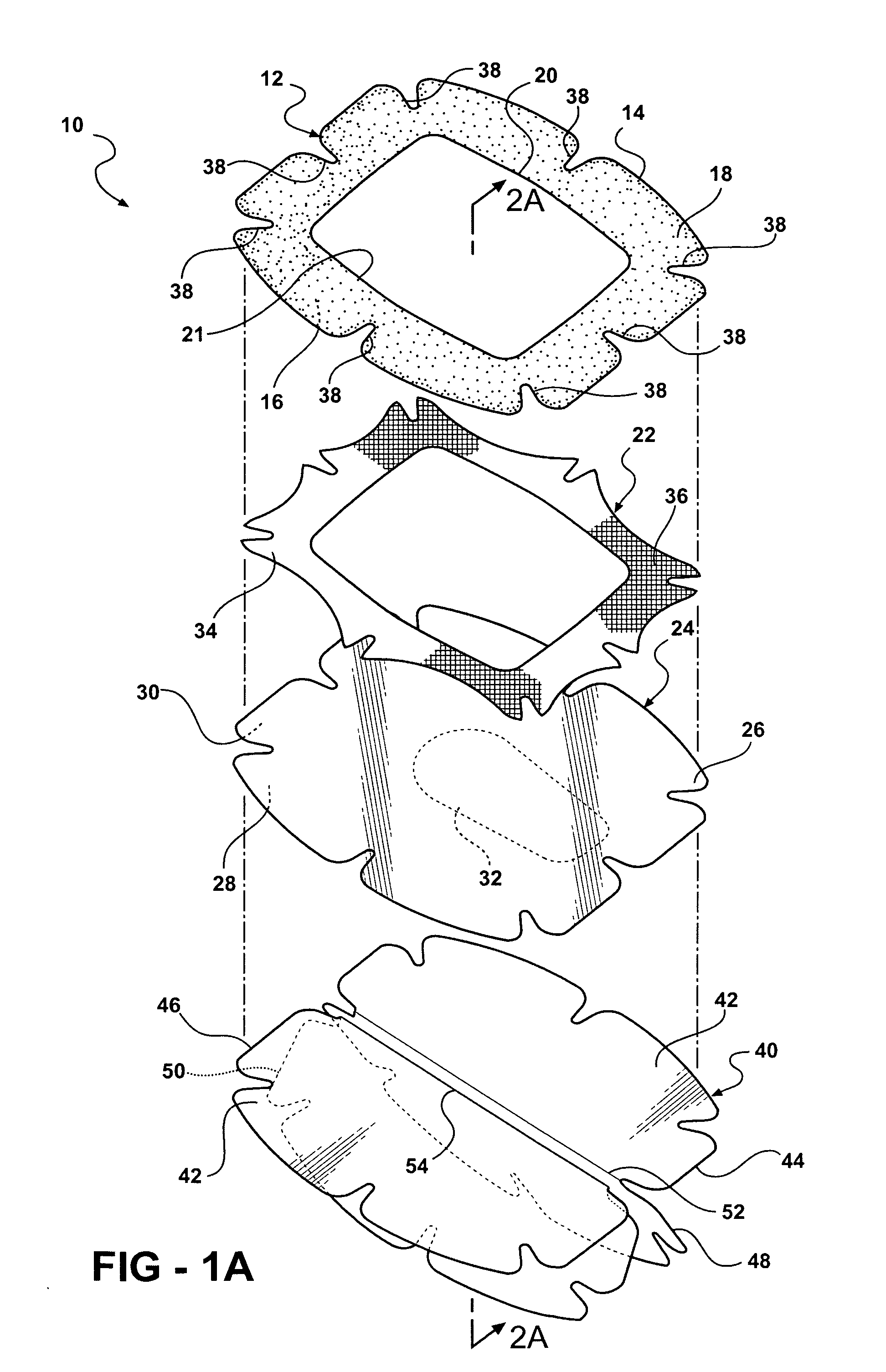Window dressing
a window dressing and self-adherent technology, applied in the field of medical dressings, can solve the problems of difficult removal of tape or dressing, damage to medical equipment, insertion site or vein or artery, unwanted movement or displacement of catheters from insertion sites, etc., to increase the resistance of dressing from peeling away from the skin of patients, easy removal and replacement
- Summary
- Abstract
- Description
- Claims
- Application Information
AI Technical Summary
Benefits of technology
Problems solved by technology
Method used
Image
Examples
Embodiment Construction
[0019]Referring now to the drawings in detail, numeral 10 generally indicates a self-adhering window dressing in accordance with the present invention. The window dressing includes an adhesive-free portion that allows for easy removal of the dressing without damage to or disturbance of the insertion site itself or to the catheter, infusion needle, infusion needle safety guard, tubing, or the like protected by the dressing. The window dressing may also resist edge peel forces exerted by medical tubing secured by the dressing.
[0020]Turning first to FIGS. 1 and 2, a self-adherent window dressing 10 in accordance with the present invention includes a fabric layer 12 bounded by an edge 14. The fabric layer 12 has an adhesive side 16, an opposite non-adhesive side 18, and an opening 20 therein to allow for viewing therethrough. The opening 20 is defined by a peripheral edge 21. The adhesive on the fabric layer adhesive side 16 may be a medical grade adhesive or similar. The dressing 10 ma...
PUM
 Login to View More
Login to View More Abstract
Description
Claims
Application Information
 Login to View More
Login to View More - R&D
- Intellectual Property
- Life Sciences
- Materials
- Tech Scout
- Unparalleled Data Quality
- Higher Quality Content
- 60% Fewer Hallucinations
Browse by: Latest US Patents, China's latest patents, Technical Efficacy Thesaurus, Application Domain, Technology Topic, Popular Technical Reports.
© 2025 PatSnap. All rights reserved.Legal|Privacy policy|Modern Slavery Act Transparency Statement|Sitemap|About US| Contact US: help@patsnap.com



